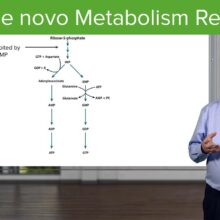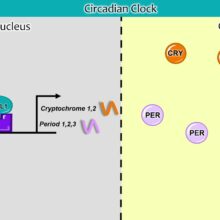Wind Turbine Aerodynamics: Stall vs Pitch Regulation
What is a stall regulated wind turbine? What is pitch control in a wind turbine? What are the flappy bits you sometimes see at the blade tips on old wind turbines?
In this video I answer these questions and talk about the two ways to regulate the amount of power produced by wind turbine blades so that the generator doesn’t get overloaded when wind speeds are high. I explain how each one works, including some of the applied physics and the engineering design process you need to be able to understand the design tradeoffs involved:
00:24 Why does wind turbine power need to be regulated?
00:29 How does a wind turbine work?
01:14 How does stall regulation work?
01:21 What is aerodynamic stall?
01:40 Angle of attack
02:13 Lift force and stall angle visualisation (turbulent separated flow)
03:35 Wind turbine blade velocity triangle (vector addition)
04:20 Benefits of stall regulated wind turbine blades
04:59 How does pitch regulation work?
05:17 Benefits of pitch regulation
05:29 Pitch bearing design and challenges
06:10 Pitching blades to startup in low wind speeds and to use as a brake
Check out my other wind turbine engineering videos:
Wind Turbine Design playlist:
How Does a Wind Turbine Work? playlist:
Wind Turbine End of Life Issues playlist:
The fluid flow simulations in this video are screenshots from the Windtunnel app. This is a really fun app to play with to run your own wind tunnel experiments and learn about aerodynamics!
For wind energy theory I recommend Burton’s “Wind Energy Handbook.”
Available to buy from Amazon (affiliate link), or your university library probably has it!
Engineering with Rosie animated intro is by www.video-gestaltung.de
[ad_2]
Source link





Maam could you make a video on velocity triangle of wind turbine
Thanks! it's a great contribution for those who like me are just getting into the wind turbine universe!
What sort of technological advancement was necessary for the pitch bearings to become viable? More durable materials? Different manufacturing technique?
How about load regulation? Multiple generators. Have several generators kick in at different wind speeds. Why give up all that wind energy. Just add more load to act as a governor.
Hi
Thank you, very clear explanations
I live in Dayton OH Vandalia 45377. They don't allow vertical wind mills. But this are has an interchange 70/75 interstates, what I would like to know is how much energy we lose everyday by not having small scale wind turbines to collect roadside. especially where community walls are preplaced and I think this will produce weather the the vehical is gas desiel or EV. thanks
What are the causes that can lead these adjustments to fail? I saw many videos about turbine accidents and I would like to know the possible causes for this.
Truly tech video- stalled vs pitch regulation. Very well explained.
Nice explanation! Found it very useful 🙂
. awesome simplicity in teaching the control of Wind turbine power
In a diy wind turbine I've seen, a special "tail-fin" was used to rotate the entire wind turbine so that it faced perpendicular to the wind. Is this something that is ever seen in commercial turbines?
Not to mention that u have a gr8 smile 🤩
Thank you so much your video was major hlp 🙌
Can you please go into detail about a pitch bearing. What is the typical size, diameter and length, materials (all stainless?), the cost, the weight, the vendors? Please show a diagram, engineering drawings, photos, and hold one up to the video camera at different angles. Thanks, Steve Hines
very simple and rich … love it
Hi, thanks for your work!
I am building a small wind turbine(3d printed) with fixed angle. I am now working on the regulator (to charge a battery). My questIon is: do I have to measure the wind speed in order to regulate the turbine rotation speed (to extract to good amount of power and having the tip speed ratio at the optimal point) or if I implement a maximum power point tracking algorithm it will find automatically?
Is the lift vector perpendicular to the local wind vector or the wing chord?
Genial, gracias!
Great video! You got a new fan from Brazil
I am a master's student in Wind Energy, and this is the best video I have seen ever talking about controlling wind turbines. Just Simple 🙂
Thank you so much!! I have spent the last few days banging my head against academic papers trying to understand this stuff for a project, finding your videos has been a godsend!
Awesome, thank you
Great Explanation. Thanks a lot!
Hi, good videos…. how many multipliers (for exm: a planetary gear) we could install in a vertical turbine??? could you subtitle to spanish please??? THANKS
Great video! Was really helpful and informative. I loved the way you presented the topic along with a pleasant and smiling face. Looking forward to seeing a lot more of your positive and cheerful content. Thank you for making engineering easier.
if the pilot is female…………. how can not we understand smth…………loved this change and the explanation. thansk
Congratulations! I will use these short videos in my engineering classes in Brazil.